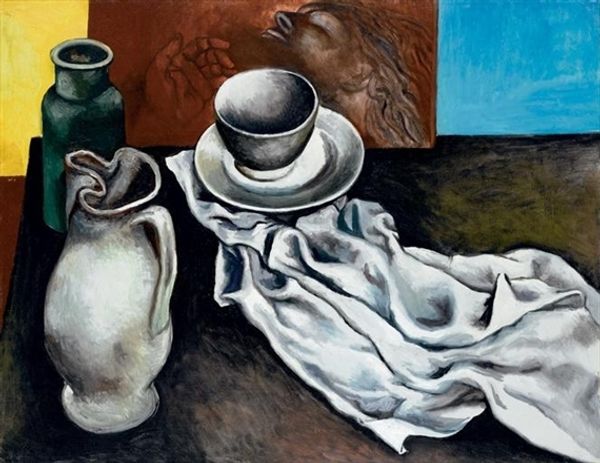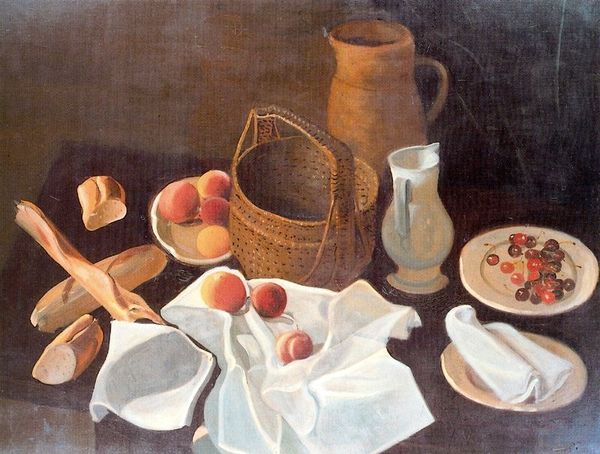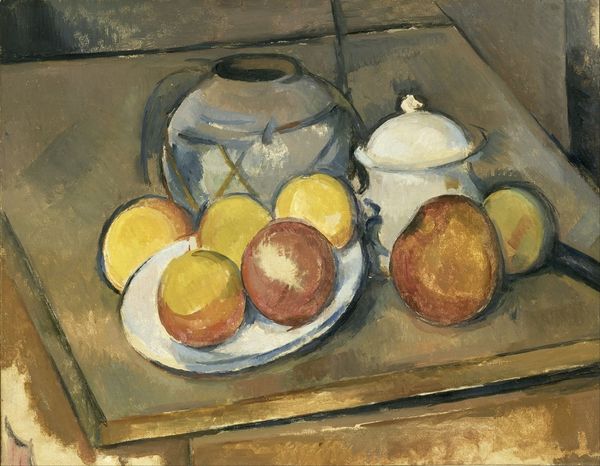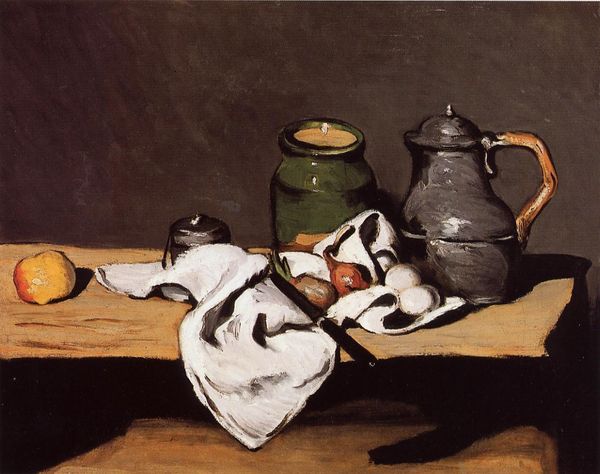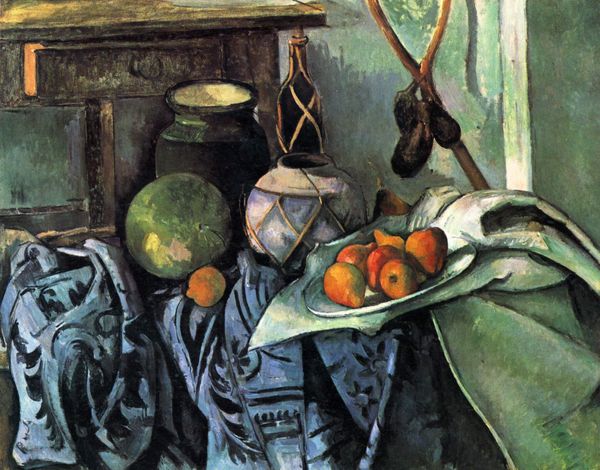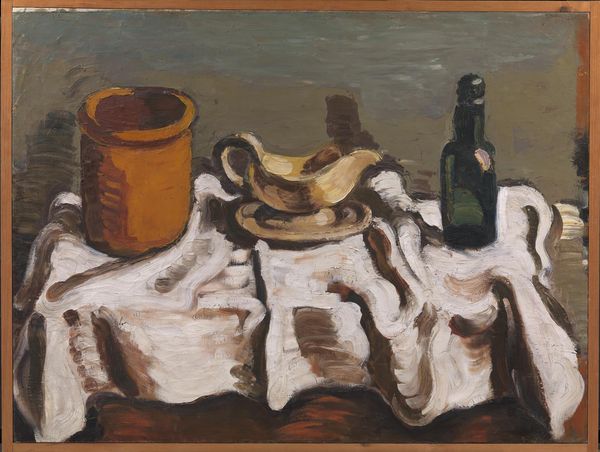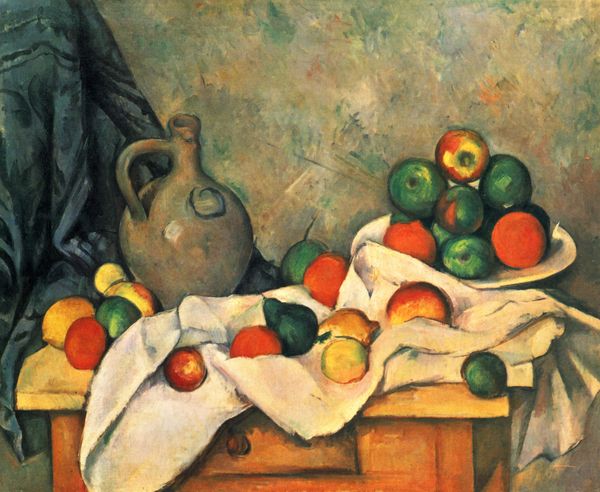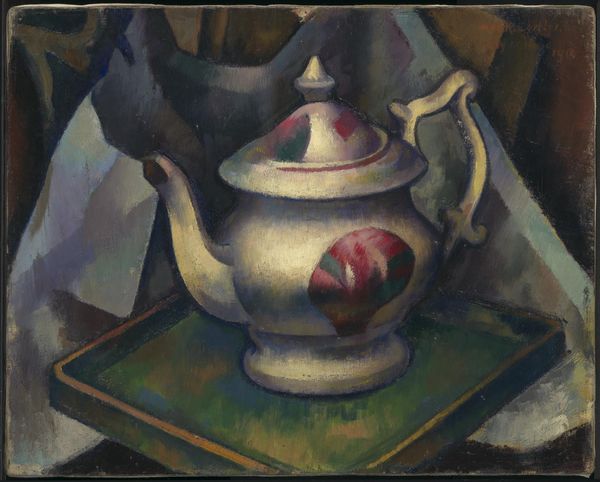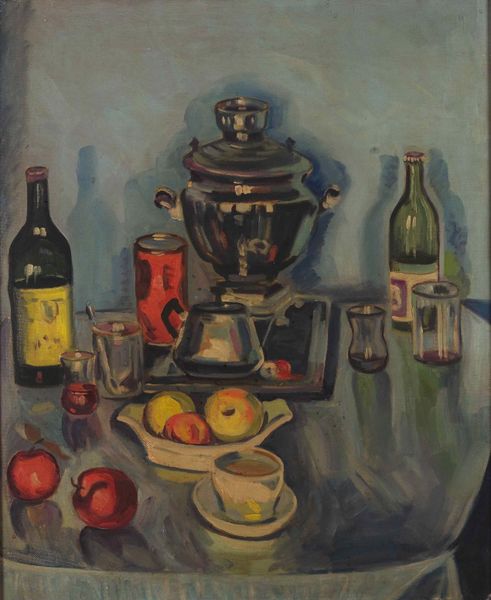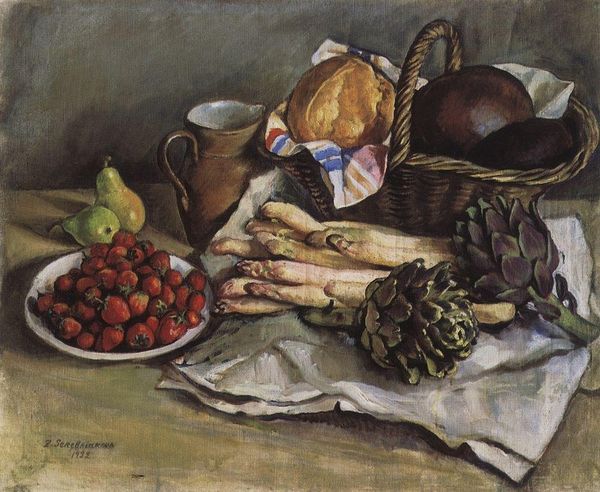
Dimensions: 50 x 61 cm
Copyright: Public domain US
Editor: Here we have Andre Derain's "Still Life with Pears and Indian Bowl," painted in 1912. The objects feel so solid, but the colors are surprisingly muted compared to what I expect from Fauvism. I am curious, what are some of the socio-historical perspectives or background to consider as we look at it? Curator: It's essential to understand this work within the context of early 20th-century European interest in non-Western cultures, here reflected in the 'Indian Bowl' mentioned in the title. Derain, along with many artists of his time, was influenced by African and other indigenous art forms, incorporating their visual languages into his own. What statement do you think he is making by juxtaposing everyday European items with an exoticized object like that bowl? Editor: So, the bowl isn't just a prop, but part of a larger conversation about colonialism and appropriation? The pears and pitcher are 'familiar,' but the bowl is meant to represent 'otherness?' Curator: Exactly. While Fauvism liberated color and form, it also coincided with a period of intense colonial expansion. Therefore, the exoticized object could speak to the power dynamics of the era, even unconsciously. Is Derain celebrating diversity, or perpetuating an unequal gaze? It is really a product of its time. How does it make you feel, seeing this represented? Editor: That's… a lot to unpack in a simple still life! It definitely makes me consider the ethical implications of artistic influence and representation, and the power relationships embedded in art, in a totally different way. Thank you. Curator: The pleasure is all mine! Seeing art with fresh eyes is crucial, even, and maybe especially, when it leads to discomfort and questioning. It's a dialogue, always!
Comments
No comments
Be the first to comment and join the conversation on the ultimate creative platform.

